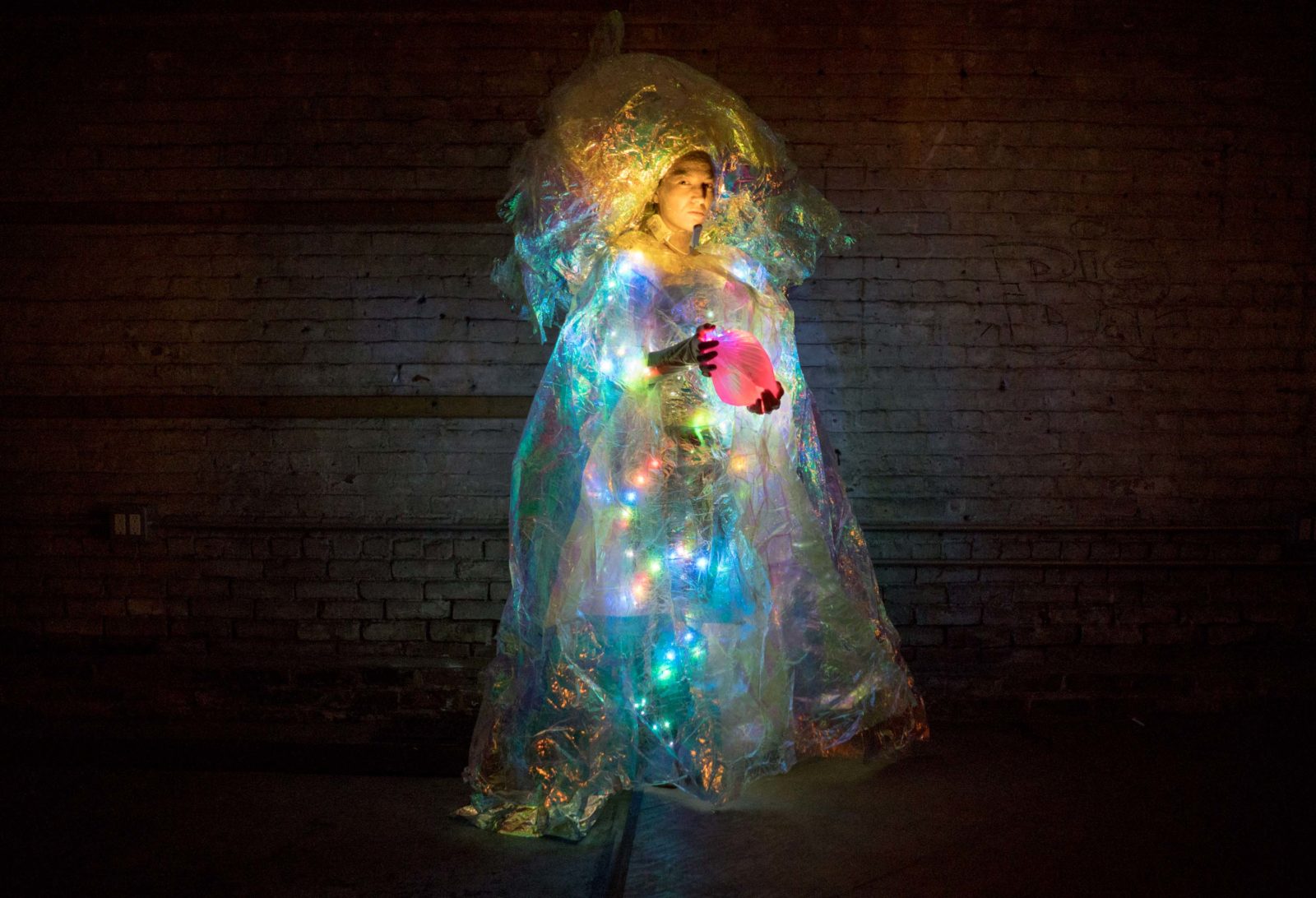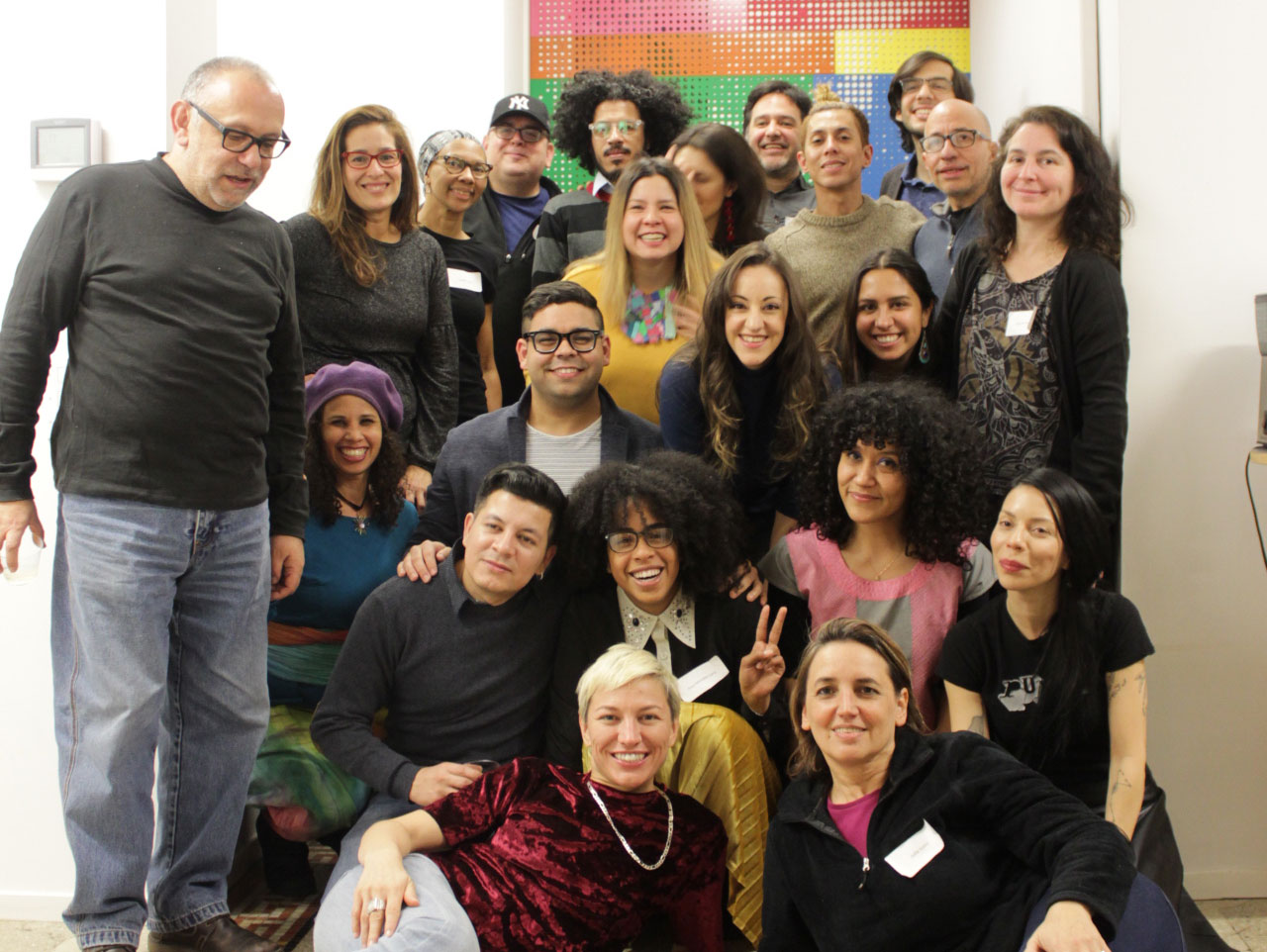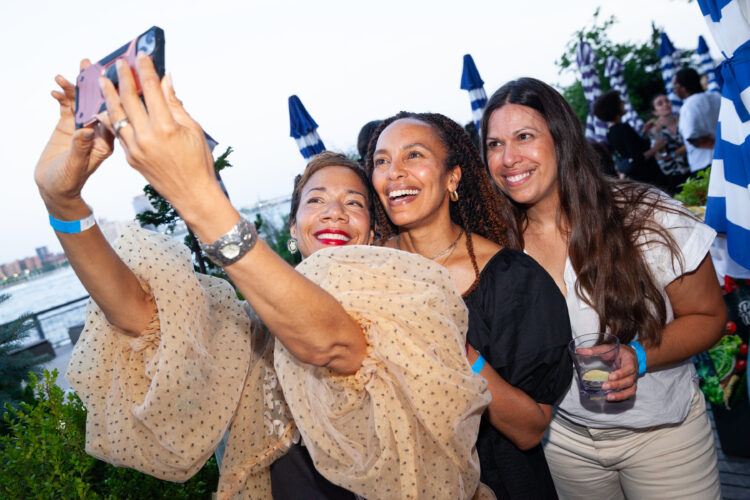Building a System of Support Among Latinx Artists






The Luminal Boom by Arantxa Araujo, 2019. Photo by Wei Chao.
Redwood by Tamara Kostianovsky.
Raízes (Roots) by Anna Parisi, 2018.
I Will Survive by Ana de Obregoso.
Letstalk by Hugo Rojas. Moss over street sign. Queens, New York.
Film still from La Bonita by María del Mar Rosario, 2018.
Spanish speakers make up about a quarter of New York City’s population. Despite sharing a common language, people who speak Spanish don’t necessarily exist as a single community. The Latinx artists in New York come from many different countries, and work in disciplines that tend to be isolated in the art world. Those divisions can isolate artists that face similar challenges, and feel in competition with their peers, rather than solidarity.
Under the guidance of Ela Troyano, who received a Creative Capital Award in 2000, Creative Capital developed workshops to help Spanish-speaking artists commune as they learn skills to build sustainable and thriving careers. The initiative, called Taller Profesional para Artistxs, or Taller for short, recently celebrated a third consecutive year of gathering groups of Spanish-speaking, New York-based artists, from all backgrounds and artistic disciplines.
“I sit on a lot of national panels, and I find that there’s a lack of understanding of the culture, of which artists are doing what,” Troyano said. “With Anglo, contemporary art work, you already have history and context. We don’t have that, and we don’t have panelists that understand the culture that we’re coming from.” A lack of understanding from grantmakers, and others who sit in the decision-making seats of the art world, can hurt Latinx artists. This was one impetus that spurred Troyano to take the professional development initiatives set up by Colleen Keegan and Ruby Lerner in the early days of Creative Capital and apply it to Spanish-speaking cultures in New York. Under Suzy Delvalle’s leadership with support from New York Community Trust, Creative Capital expanded the singular workshops into a free, multi-day experience for artists across all New York City boroughs, in partnership with local organizations Casita Maria, Hemisphere Institute, and El Puente.
A lack of understanding about Latinx cultures rang true for some of the artists who experienced Taller. Ana de Orbegoso, a Peruvian artist inspired by the Cuzco school, said Taller was “a safe place to encounter colleagues who understood your culture, which is sometimes necessary for your work to be understood.” Hugo Rojas added that he was surprised to learn that, at the Taller, “I started writing and thinking about my practice in my own language—it really helped me to explore more deeply how to explain my practice.” Rojas makes socially engaged, interactive work, and recently, he worked with the Center for Urban Pedagogy to make a website with students in the South Bronx that explored the impact of facial recognition on their community. Because his practice doesn’t fit neatly into an easily commodified, or predetermined category, he struggled to speak or write about his work in English. Among his Spanish-speaking cohort, however, he saw his practice, and his career, in a new light.
Artists, and particularly Latinx artists, Araujo said, tend to talk themselves out of a paycheck, thinking, ‘I’m so lucky to do art. It’s ok if I don’t get paid.’ Yes, you’re lucky to do what you love, but you should get paid. We don’t eat air!”
These new conversations also helped artists see the bigger picture of their careers. “I wasn’t thinking about what the next steps in my career would be,” Rojas said. Instead he was constantly pushing to make the next project, and finding money to do it. But speaking in English, Spanish, and “sometimes Spanglish,” he explained, “the Taller forced me to see the big picture of my art career.” Arantxa Araujo, an artist who mixes her advanced degrees in neuroscience with performance, agreed. It was helpful, she said, “just being able to name the things that you are doing, address them, acknowledge them.” Araujo said speaking honestly about weaknesses was invigorating. Through emotional discussions, the group figured “out how to work through them so they also become strengths.”
Speaking to some of the artists that participated in the recent iteration of Taller, there was a feeling that Latinx artists have to work twice as hard as American-born, English-speaking artists. “Since we are mostly an immigrant community,” said María del Mar Rosario, who makes experimental documentaries about gender norms, is working on a film about the colonial status of her Puerto Rican home, “there is a question of how to position ourselves in an industry where we are like a second class.” In addition to speaking English as a second language, many Latinx artists have to make sure they are exhibiting or performing their work enough to qualify for O-1 visas. On top of that, Tamara Kostianovsky, an artist who uses recycled textiles to make installation sculptures, explained, “for a lot of artists of Latin American origins, we come from rather poor countries in which there’s this mentality that you can do things as favors, and you don’t need to get paid. Everything serves a promise of opportunity that may or may not come.”
Working with her sister Carmelita Tropicana, also a Creative Capital Awardee, Troyano consistently emphasized to Taller participants that all artists should get paid for their work, and they should not be afraid to advocate for that on behalf of themselves and others. Artists, and particularly Latinx artists, Araujo said, tend to talk themselves out of a paycheck, thinking, “‘I’m so lucky to do art. It’s ok if I don’t get paid.’ Yes, you’re lucky to do what you love, but you should get paid. We don’t eat air!” Anna Parisi, a Brazilian multidisciplinary artist who uses her work to question hegemonies and minority oppression, said that an important concept she learned from Taller was “that being a professional artist is a job.”
However, finding resources in the art world isn’t easy—there are more artists and art projects than dollars allocated to support them. The competitive nature of the art world can pit artists against each other. Troyano wanted to use Taller as a way to share the very few resources out there, rather than compete for them. “One of the most important things of doing this was not just skills building, but building networks and community.” The idea of building Latinx community across disciplines, nationality, gender, sexuality, race, ability, and age came up often with the artists we spoke to. Networks, though important, can tend to be transactional and interest-oriented, making artists feel like they are competing for the few resources out there. “Whereas building a community,” explained Kostianovsky, “is a way of supporting your career in the long run.”

Group shot of Taller 2019-20 cohort at the Hemispheric Institute for Performance and Politics

Group shot of Taller 2019-20 cohort, in partnership with El Puente.

Group shot of Taller 2018-19 cohort, in partnership with Casita Maria.
Parisi found it helpful that, by viewing her artist practice more as a business with a longer timeline, she could set daily, monthly, and three and five year goals to give herself something to move toward. Breaking into the art world, Parisi said, is often the most difficult part of an artist’s career—you need a studio to make work, “and you need to pay rent in addition to paying rent for an apartment, and to buy materials. As an artist, if you’re not making, you feel like you’re failing.” Setting up a business plan—one of the exercises of Taller—that used benchmarks in both her personal life and artistic practice, encouraged Parisi to use what was available. “Prototype things—just keep moving towards the goals that you have established for yourself. Use what you have and throw that net in the ocean and see what comes, and things do come.”
At the end of the day, Troyano and the artists she worked with on Taller wanted to create a unique community of Latinx artists that were there to support one another. “Even with my closest friends who are artists,” said Kostianovsky, “there is an insecurity about sharing information because the art world by nature is centered on secrecy and confidentiality.” In a more relaxed setting, and without that competitive nature, artists could ask questions freely, and “not be concerned about how your comments are going to affect your career later on.” Ana de Orbegoso said “the fact that the facilitators were so open to us, it really felt like a family.” That familiar atmosphere, Orbegoso went on to say, “loosens you up, and you really feel that you’re not alone.”
New York isn’t the only city with a large Spanish-speaking artist population. Troyano and Creative Capital envision the Taller taking place in many cities across the country—places like San Juan, Puerto Rico, Houston, Texas, and Miami, Florida—giving the unique Latinx communities the tools to build artistic careers where they live.
